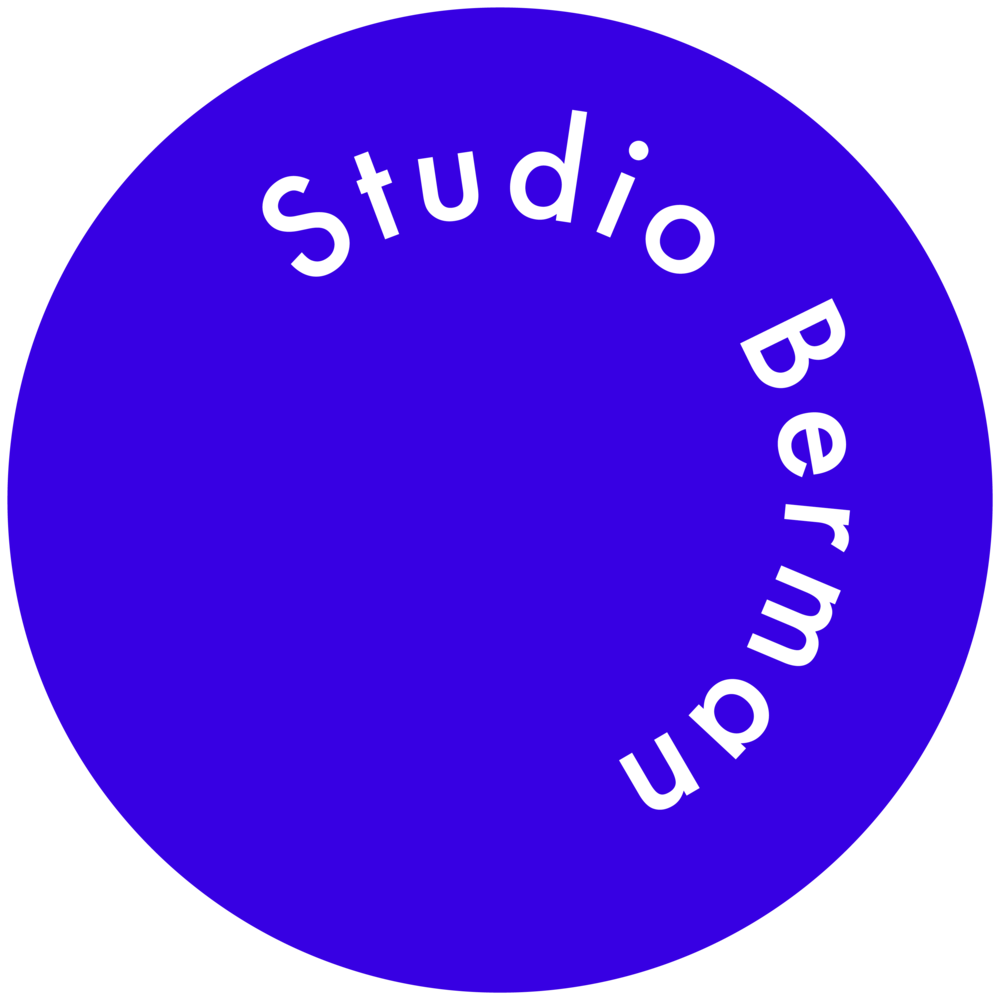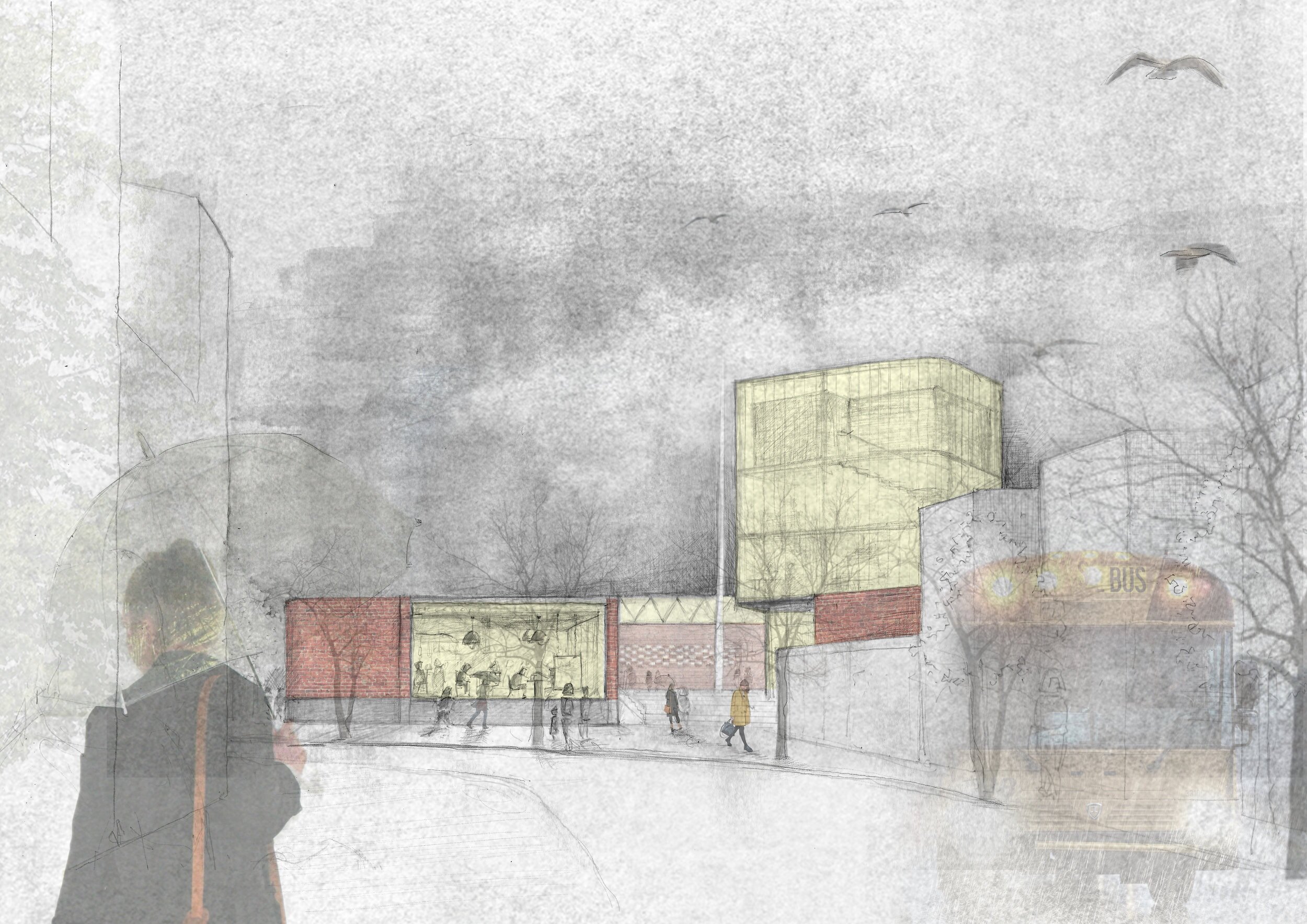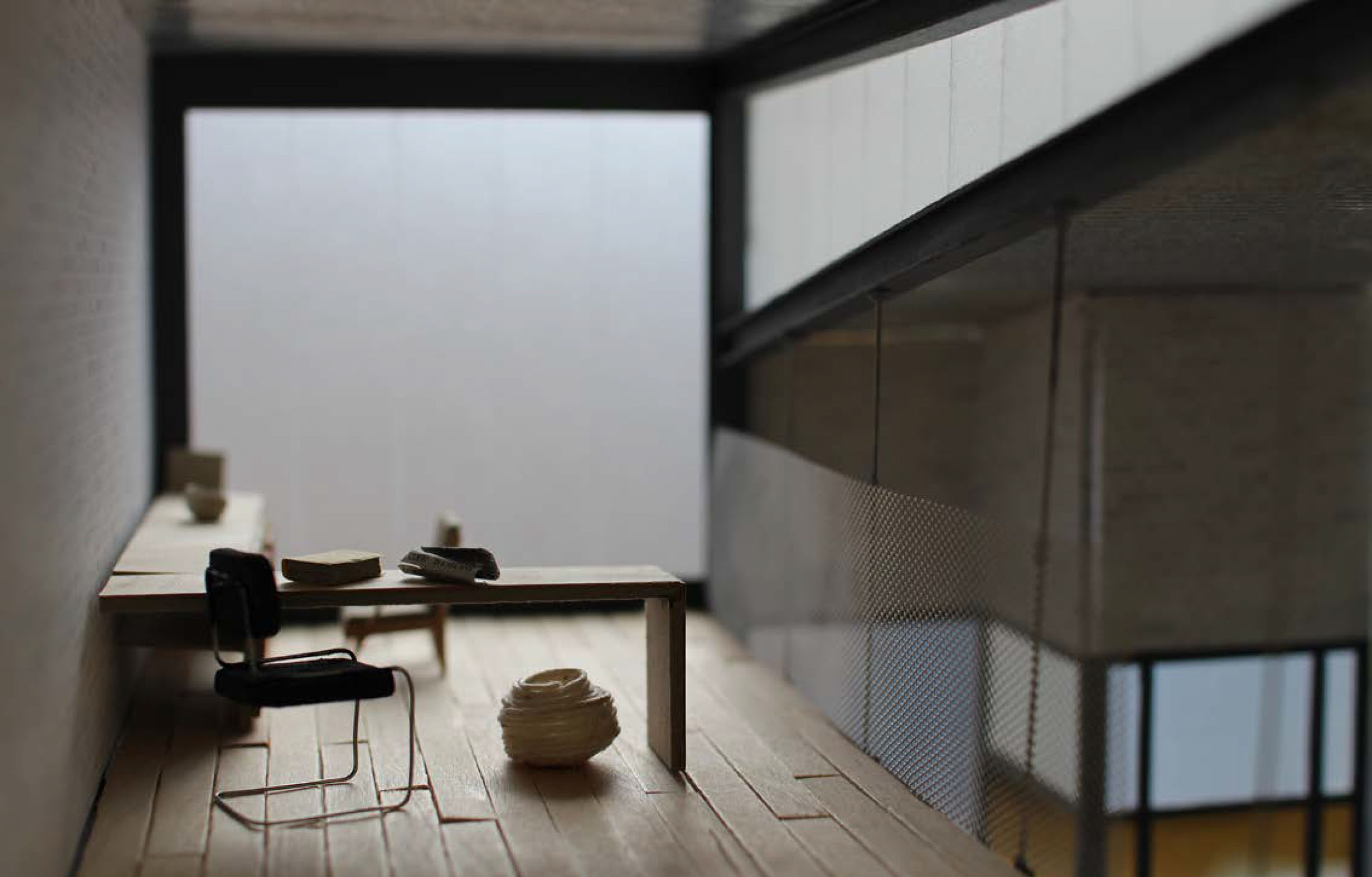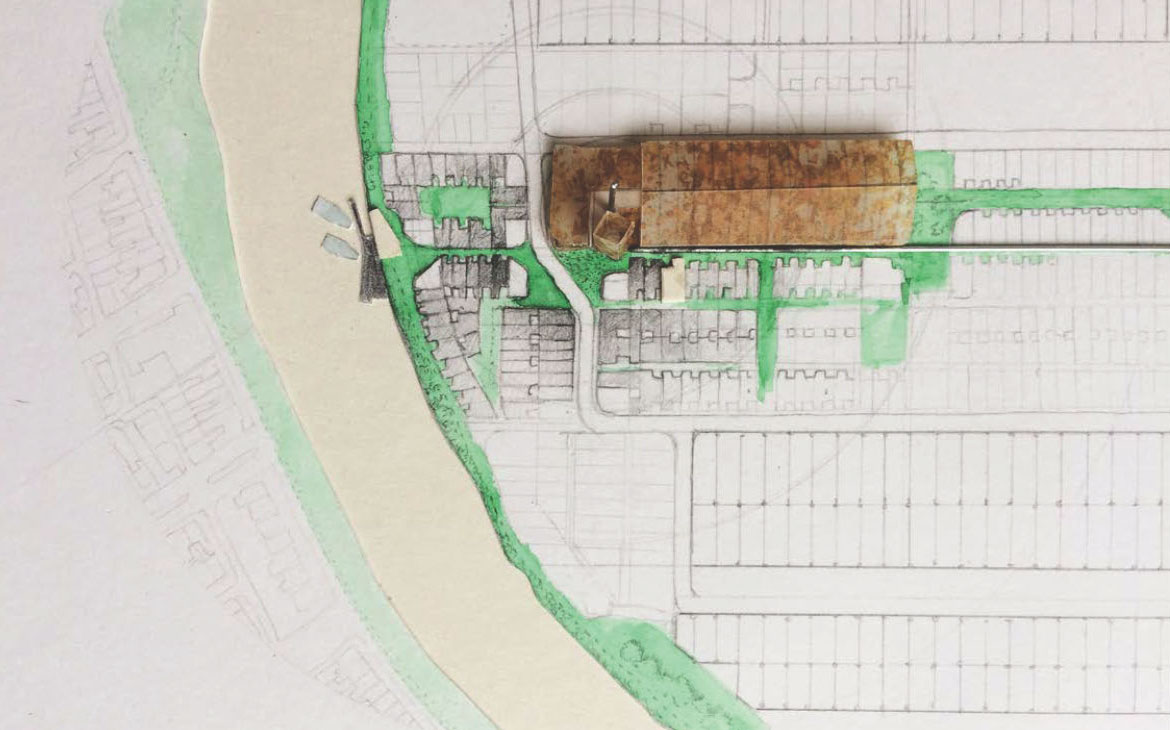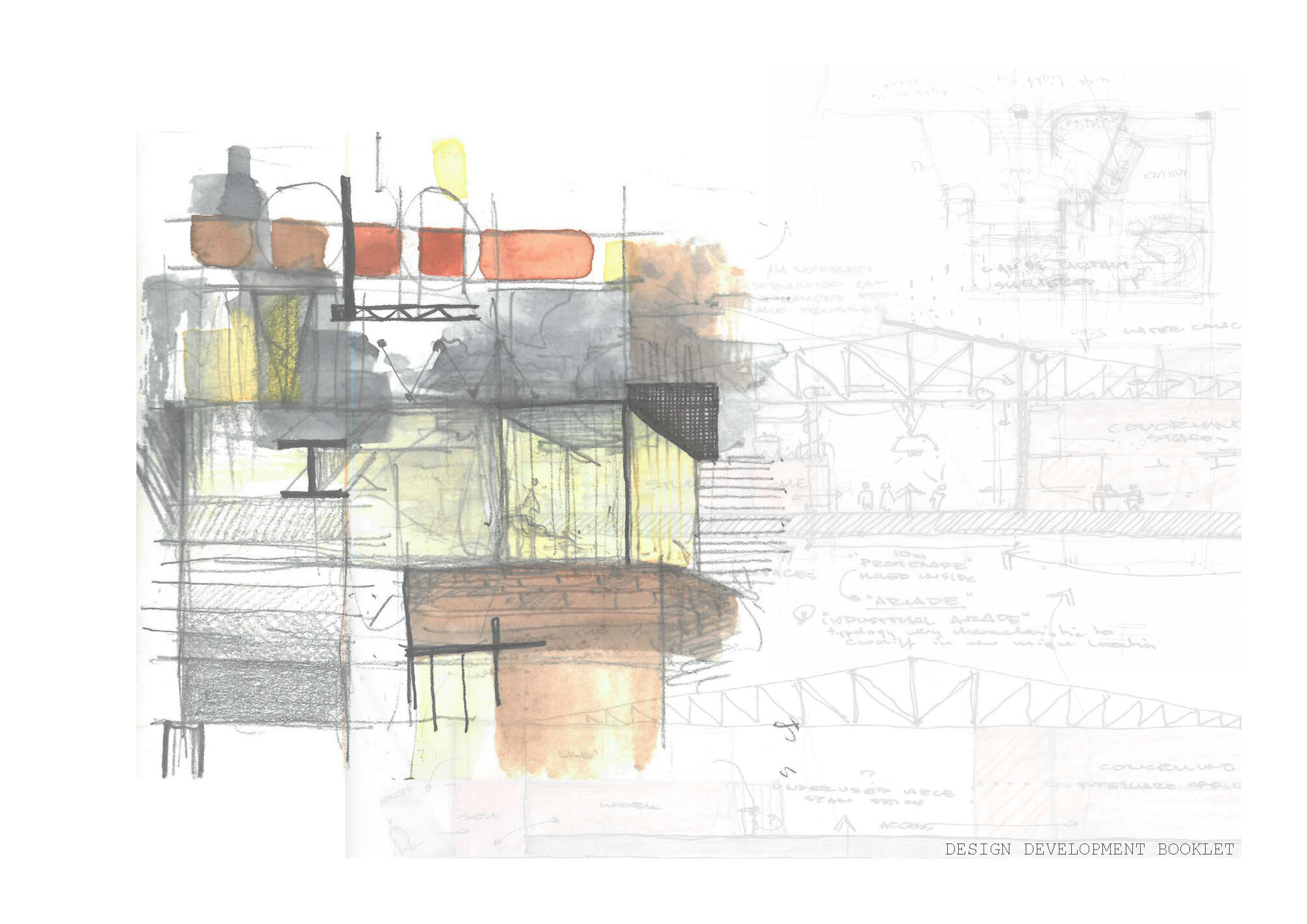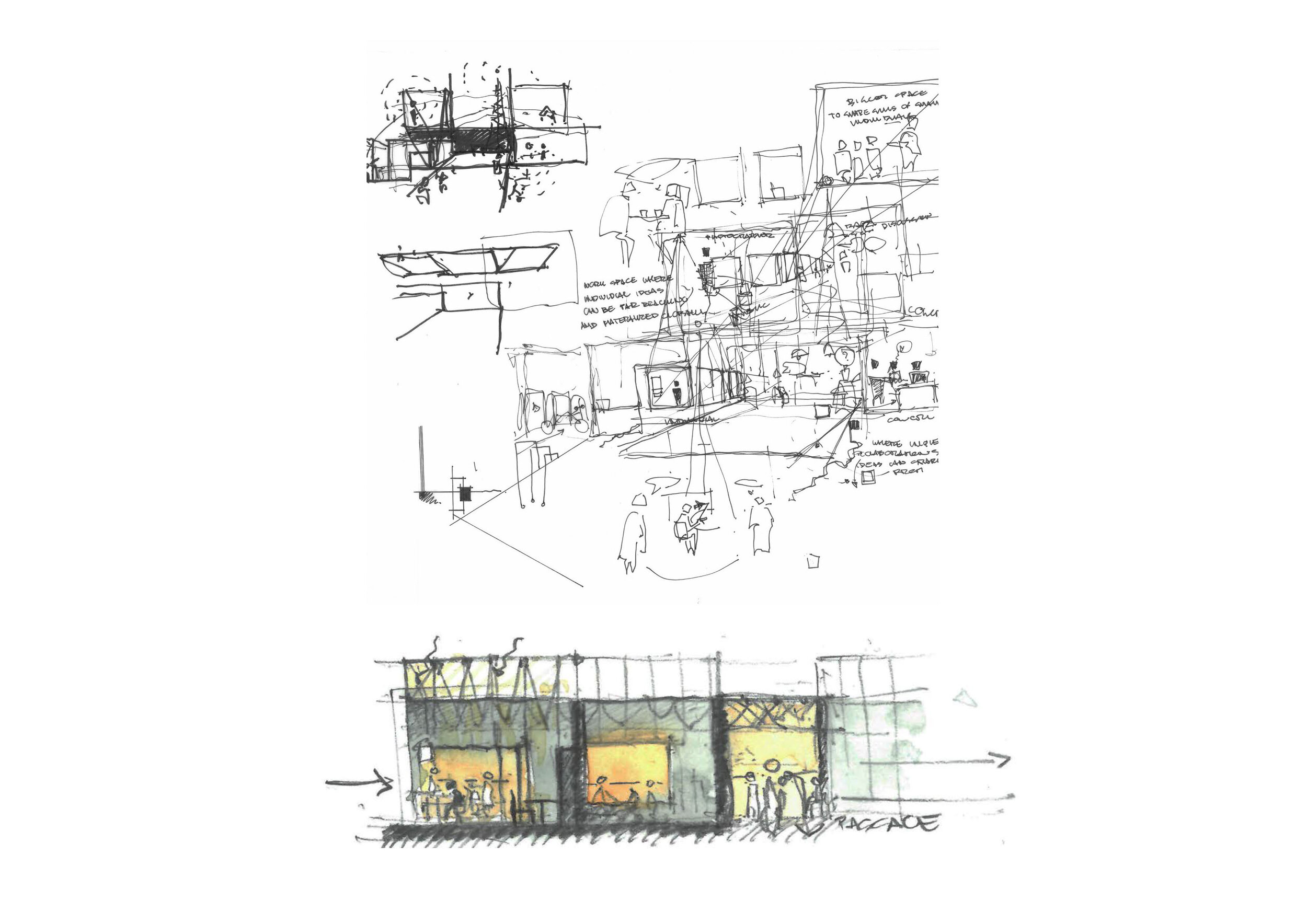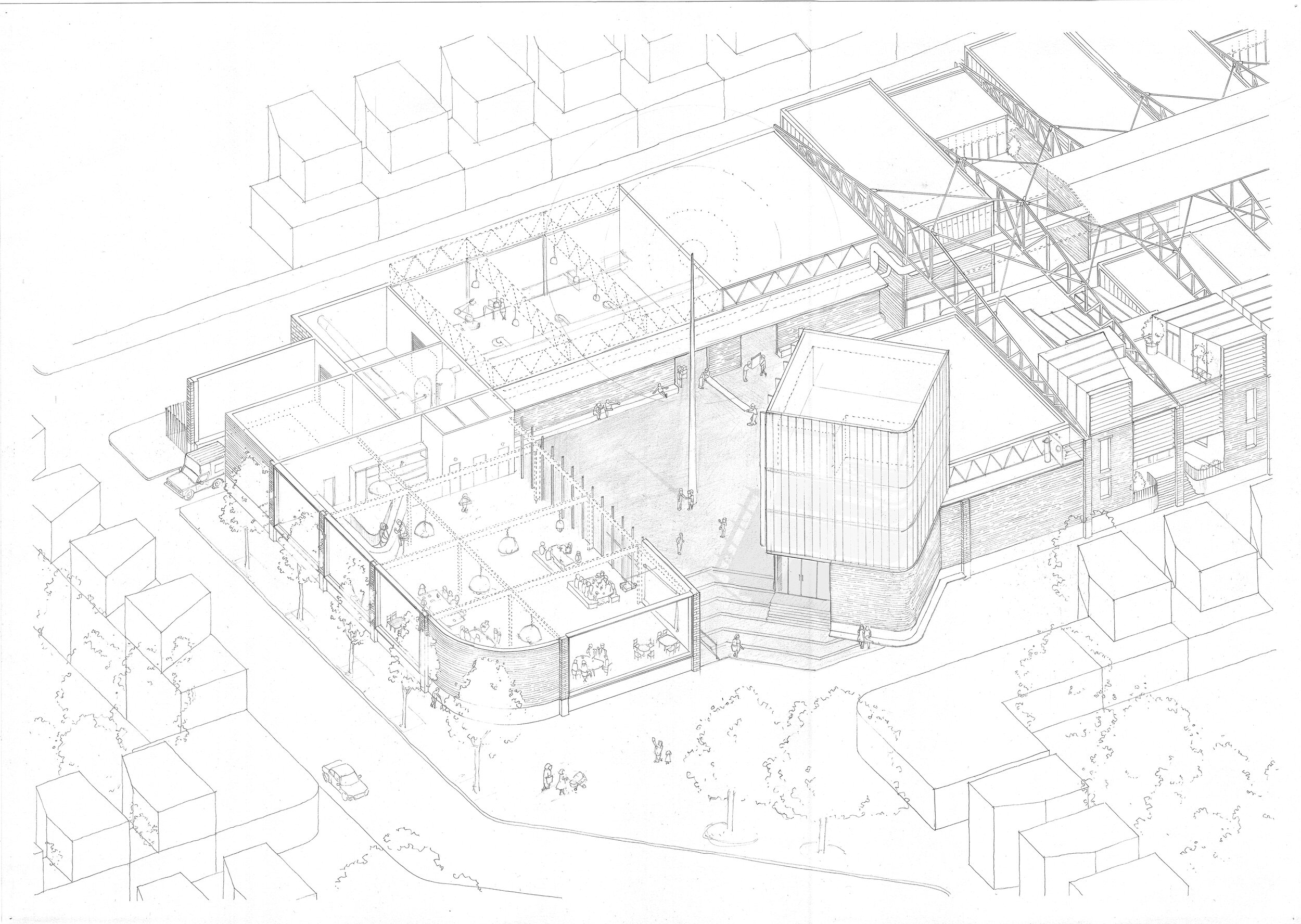Architecture and Generosity - Work
Project by Year 3 student Michal Kasperski
In the academic year 2017/18 Unit 7, tutored by Zoë Berman, has continued working under the broad theme of Architecture and Generosity. Last year the Unit developed architectural proposals that represented activities of communality and reciprocal care. This year we are expanded our ideas under the thematic umbrella of generosity – working on strategies that support and enable making, and living.
Cardiff is a city founded on industry. Today its economy is centred on retail, media, film, finance and communication technology – but the city and surrounding towns have a history rooted in production of iron, steel, coal mining and ship building. Since the 1970s these industries have been virtually wiped out, leaving communities struggling with loss of employment and a loss of identity. “The British have sometimes been labelled a ‘nation of shopkeepers’. What they really loved was being a nation of manufacturers, which makes every step in the UK’s long descent from being the world’s first industrial power especially painful.”
Regeneration has begun on Dumballs Road with the building of student halls, offices and luxury flats. Curran Embankment is earmarked for the next round of development. The plans follow the precedent for switching land use; away from existing manufacturing, to new high-density housing. This sets up a problem for the future. The pervading contemporary master-planning approach for many cities locates suppliers of a metropolis – mechanics, brewers, welders, wood workers, printers and so on – outside of the city. This is a tendency we are challenging.
Locating those who supply a city with its products and services on the edges of an urban center presents issues of sustainability, including extensive transport costs, significant increases in fuel consumption, increased lead times and so on. This creates socio-economic ghettoisation of space; only housing versus only making. We are exploring how the two could work together alongside each other.
We have designed alternative visions that enable inner city manufacturing, rather than sending it to the cities fringes. We have developed creative, thoughtful strategies seeking to support and celebrate existing businesses – alongside providing space for further workshops and studios for makers to earn a living, interwoven with spaces for living.
